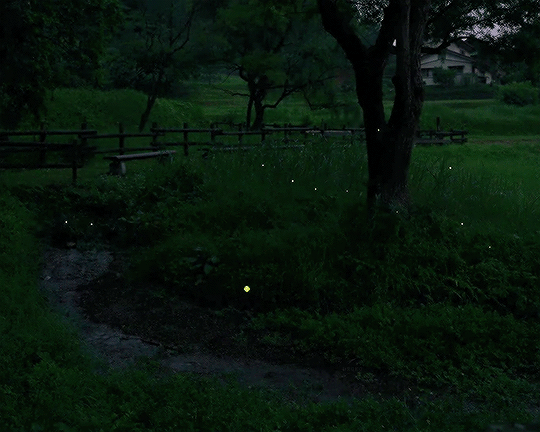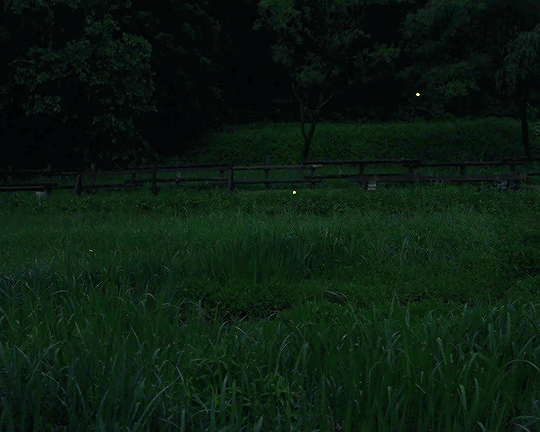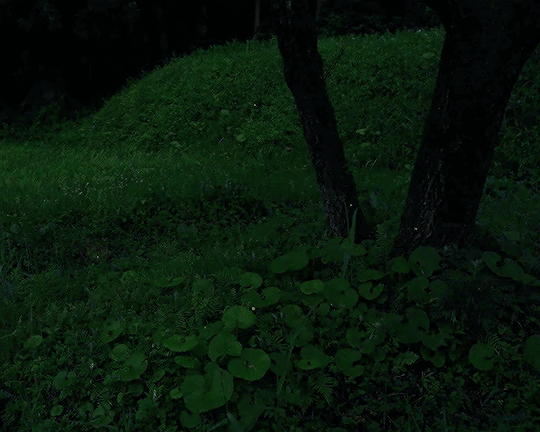Don't wanna be here? Send us removal request.
Photo

2025 June 23
W5: Pillars of Star Formation Image Credit: NASA, WISE, IRSA; Processing & Copyright: Francesco Antonucci
Explanation: How do stars form? Images of the star forming region W5 like those in the infrared by NASA’s Wide Field Infrared Survey Explorer (WISE, later NEOWISE) satellite provide clear clues with indications that massive stars near the center of empty cavities are older than stars near the edges. A likely reason for this is that the older stars in the center are actually triggering the formation of the younger edge stars. The triggered star formation occurs when hot outflowing gas compresses cooler gas into knots dense enough to gravitationally contract into stars. In the featured scientifically colored infrared image, spectacular pillars left slowly evaporating from the hot outflowing gas provide further visual clues. W5 is also known as Westerhout 5 (W5) and IC 1848. Together with IC 1805, the nebulas form a complex region of star formation popularly dubbed the Heart and Soul Nebulas. The featured image highlights a part of W5 spanning about 2,000 light years that is rich in star forming pillars. W5 lies about 6,500 light years away toward the constellation of Cassiopeia.
∞ Source: apod.nasa.gov/apod/ap250623.html
#astronomy#astronomy picture of the day#star formation#star forming region#nebula#emission nebula#Soul Nebula#Westerhout 5#W5#Sharpless 2-199#Sh2-190#Heart Nebula#NGC 896#IC 1805#Sharpless 2-190#Sh2-199#star cluster#open cluster#IC 1848#infrared
72 notes
·
View notes
Text
can I interest you in baby trash panda chaos
565 notes
·
View notes
Photo

2025 June 22
A Berry Bowl of Martian Spherules Image Credit: NASA, JPL, Curiosity Rover
Explanation: How were these unusual Martian spherules created? Thousands of unusual gray spherules made of iron and rock and dubbed blueberries were found embedded in and surrounding rocks near the landing site of the robot Opportunity rover on Mars in 2004. To help investigate their origin, Opportunity found a surface dubbed the Berry Bowl with an indentation that was rich in the Martian orbs. The Berry Bowl is pictured here, imaged during rover’s 48th Martian day. The average size of a Martian blueberry rock is only about 4 millimeters across. By analyzing a circular patch in the rock surface to the left of the densest patch of spherules, Opportunity obtained data showing that the underlying rock has a much different composition than the hematite rich blueberries. This information contributes to the growing consensus that these small, strange, gray orbs were slowly deposited from a bath of dirty water.
∞ Source: apod.nasa.gov/apod/ap250622.html
#astronomy#astronomy picture of the day#geology#Mars#spherule#hematite#blueberry#mars rover#Opportunity
59 notes
·
View notes
Text
Does this have a sibling drama regarding the rise of agriculture in disparate parts of the world - the culture being focused on and the crops may differ, but in each case the first successful planting is rudely interrupted by a flying saucer that flattens a crop circle into the field?
What initially appears to be a rigorously researched historical drama about the early domestication of cattle set in Anatolia circa 8500 BCE, interrupted around the 45-minute mark by the sudden appearance of little green men in flying saucers abducting the viewpoint character's newly domesticated cows.
#aliens#archaeology#agriculture#domestication#archaic human cave paintings where a family watches one of their own get abducted by a random saucer#next painting is the abductee trying to detail what happened
3K notes
·
View notes
Text
Mother of Geese

@ilikeloons
I do hope someone makes one since this is a genius idea but I don't think I'll ever finish this sketch lol - was a very fun use of 50 minutes tho!

Wow i really didnt stick to the reference oops. Looking at the photos now I think it would look more hydra-ish if I used their actual anatomy haha.
6K notes
·
View notes
Text
Misread instructions, have been repeating my sins so many times.

help
5 notes
·
View notes
Text
I can't do much but maybe this will interest someone. This cookbook is by a classically trained autistic chef, made for people with sensory issues. It's sold 1/6th of its initial run because apparently no one wants to have an autistic person interviewed on TV.
Apparently it's also very funny.
Spread this around! I bet someone here can use this.
#food#recipes#cookbook#my nephew is autistic and deals with some big food sensory issues thanks to dealing with celiac disease from birth to this past year#he's also wanting to go to community college once he graduates high school and take cooking courses so this might be a great read for him
25K notes
·
View notes
Photo

2025 June 21
Two Worlds, Two Analemmas Image Credit: (left) Copyright: Tunc Tezel (TWAN) - (right): NASA/JPL/Cornell/ASU/TAMU
Explanation: Sure, that figure-8 shaped curve you get when you mark the position of the Sun in Earth’s sky at the same time each day over one year is called an analemma. On the left, Earth’s figure-8 analemma was traced by combining wide-angle digital images recorded during the year from December 2011 through December 2012. But the shape of an analemma depends on the eccentricity of a planet’s orbit and the tilt of its axis of rotation, so analemma curves can look different for different worlds. Take Mars for example. The Red Planet’s axial tilt is similar to Earth’s, but its orbit around the same sun is more eccentric (less circular) than Earth’s orbit. As seen from the Martian surface, the analemma traced in the right hand panel is shaped more like a tear drop. The Mars rover Opportunity captured the images used over the Martian year corresponding to Earth dates July 2006 to June 2008. Of course, each world’s solstice dates still lie at the top and bottom of their different analemma curves. The last Mars northern summer solstice was May 29, 2025. Our fair planet’s 2025 northern summer solstice is at June 21, 2:42 UTC.
∞ Source: apod.nasa.gov/apod/ap250621.html
#astronomy#astronomy picture of the day#analemma#Sun#Earth#Mars#mars rover#Opportunity#Baku#Azerbaijan#solstice
83 notes
·
View notes
Text
3 notes
·
View notes
Photo

2025 June 20
Major Lunar Standstill 2024-2025 Image Credit & Copyright: Luca Vanzella, Alister Ling
Explanation: Edmonton, Alberta, Canada, planet Earth lies on the horizon. in this stack of panoramic composite images. In a monthly time series arranged vertically top to bottom the ambitious photographic project follows the annual north-south swing of sunrise points, from June solstice to December solstice and back again. It also follows the corresponding, but definitely harder to track, Full Moon rise. Of course, the north-south swing of moonrise runs opposite sunrise along the horizon. But these rising Full Moons also span a wider range on the horizon than the sunrises. That’s because the well-planned project (as shown in this video) covers the period June 2024 to June 2025, centered on a major lunar standstill. Major lunar standstills represent extremes in the north-south range of moonrise driven by the 18.6 year precession period of the lunar orbit.
∞ Source: apod.nasa.gov/apod/ap250620.html
#astronomy#astronomy picture of the day#panorama#sunrise#solstice#summer solstice#moon#full moon#moon rise#Edmonton#Alberta#Canada
146 notes
·
View notes
Photo

2025 June 19
NGC 3521: Galaxy in a Bubble Image Credit & Copyright: Vikas Chander
Explanation: Gorgeous spiral galaxy NGC 3521 is a mere 35 million light-years away, toward the northern springtime constellation Leo. Relatively bright in planet Earth’s sky, NGC 3521 is easily visible in small telescopes but often overlooked by amateur imagers in favor of other Leo spiral galaxies, like M66 and M65. It’s hard to overlook in this colorful cosmic portrait though. Spanning some 50,000 light-years the galaxy sports characteristic patchy, irregular spiral arms laced with dust, pink star forming regions, and clusters of young, blue stars. The deep image also finds NGC 3521 embedded in fainter, gigantic, bubble-like shells. The shells are likely tidal debris, streams of stars torn from satellite galaxies that have undergone mergers with NGC 3521 in the distant past.
∞ Source: apod.nasa.gov/apod/ap250619.html
86 notes
·
View notes
Text

#should be unless my background check screws up#got a permanent position at the place I was temping at for a similar role and it comes with a $6/hr raise
42K notes
·
View notes
Photo

2025 June 18
Space Station Silhouette on the Moon Image Credit & Copyright: Eric Holland
Explanation: What’s that unusual spot on the Moon? It’s the International Space Station. Using precise timing, the Earth-orbiting space platform was photographed in front of a partially lit gibbous Moon in 2019. The featured image was taken from Palo Alto, California, USA with an exposure time of only 1/667 of a second. In contrast, the duration of the transit of the ISS across the entire Moon was about half a second. A close inspection of this unusually crisp ISS silhouette will reveal the outlines of numerous solar panels and trusses. The bright crater Tycho is visible on the lower left, as well as comparatively rough, light colored terrain known as highlands and relatively smooth, dark colored areas known as maria. Downloadable apps can tell you when the International Space Station will be visible from your area.
∞ Source: apod.nasa.gov/apod/ap250618.html
116 notes
·
View notes
Text
If I were president of Doctor Who, I'd make a Simpsons episode and I'm not joking
40K notes
·
View notes
Photo




♡
#gif#landscape#insects#firefly#been rainy so many evenings this early summer haven't had a chance to look for fireflies
84K notes
·
View notes
Text
Someone edit the ballpit to have wheels and a sad-looking Trump sitting in it, rolling down the empty DC street.




happy birthday, asshole!
#current events#politics#trump parade#part of the reason the pumpkin is having tantrums this week along with the g7 mockery
16K notes
·
View notes

